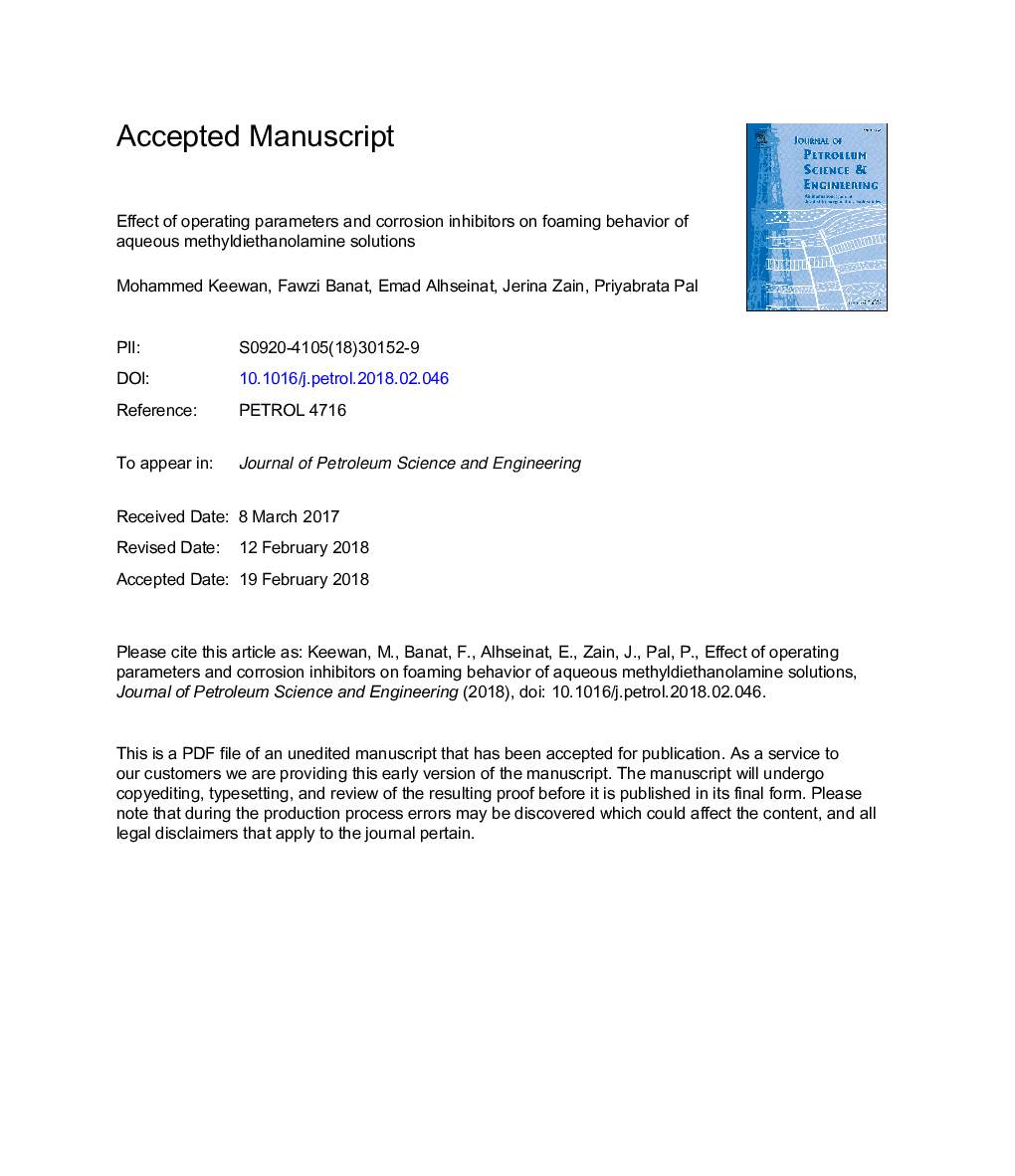| Article ID | Journal | Published Year | Pages | File Type |
|---|---|---|---|---|
| 8125049 | Journal of Petroleum Science and Engineering | 2018 | 23 Pages |
Abstract
Corrosion inhibitors are one of the main causes of amine foaming in gas sweetening units. A detailed understanding of amine foaming behavior in the presence of corrosion inhibitors is of great importance if the foaming is to be minimized. In this work, a comparative study was carried out to investigate the foaming tendency and bubbles characteristics of aqueous methyldiethanolamine (MDEA) in the presence of fatty acid-based (Bis(2-Hydroxyehyl)cocoalkylamine; BHCL) and hydrocarbon-based (HCB) corrosion inhibitors. The effect of different operating parameters such as nitrogen flow rate, corrosion inhibitor concentration, foaming time, solution temperature and pore size of the gas diffuser were studied using foam scan instrument. The results showed that on increasing the foaming time, solution temperature and corrosion inhibitor concentrations, the foaming tendency increased. For BHCL, the foam height tends to decrease with a high flow rate and a small pore size of the gas diffuser. Nevertheless, the opposite trend was observed in the presence of the HCB corrosion inhibitor. Depending upon the type of corrosion inhibitors, careful optimization of the operating conditions showed a high potential to minimize amine foaming.
Related Topics
Physical Sciences and Engineering
Earth and Planetary Sciences
Economic Geology
Authors
Mohammed Keewan, Fawzi Banat, Emad Alhseinat, Jerina Zain, Priyabrata Pal,
